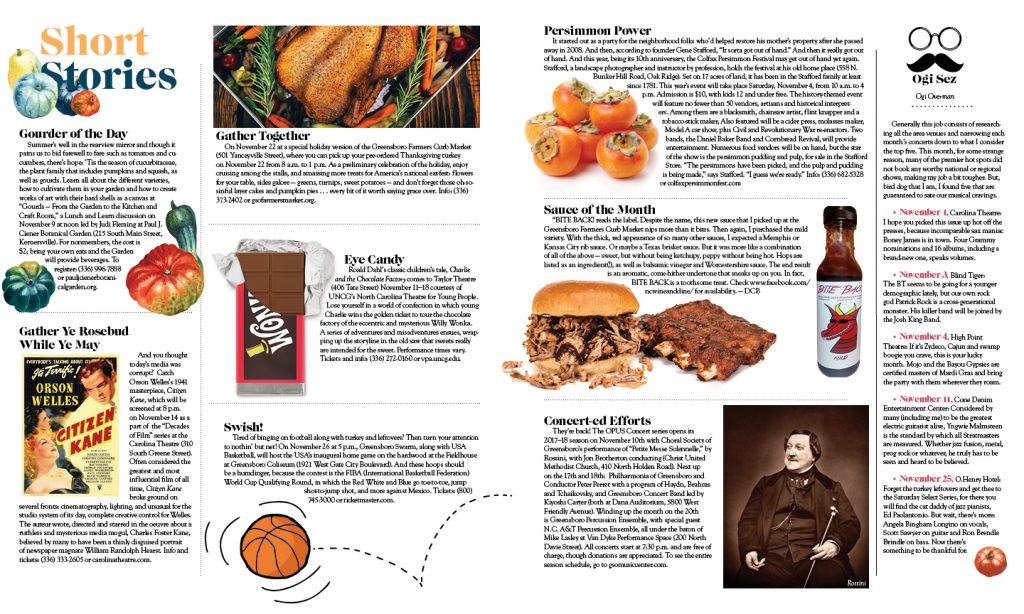Doodad
A Little Goat Music
The Anne-Claire Niver story begins with unexpected baaackup singers
By Grant Britt
Photographs courtesy of Javier Hernandez


Warbling while goats nibble at the hem of your shorts is a good way to break into show bidness. It’s a technique Anne-Claire Niver, known for fronting Anne-Claire and the Wild Mystics, found useful to jumpstart her musical career. But it was no novelty act. When she actually took the stage, the goats stayed home.
After getting her degree in classical voice performance at UNCG in 2013, the N.C. native was burned out on the genre. “There were just a lot of people it came more naturally to,” she says. “I’d been in school for five years at that point, I was done, so I unofficially quit music.”
After moving home with her parents following graduation, Niver was feeling lost. Then she met Laurelyn Dossett’s daughter Amelia, who had lived and taught in Thailand for two and a half years. The chance encounter sent her to Thailand, where she also taught. “It seemed like sort of the opposite of my life at the moment, and I just decided to go ahead and do it,” Niver says of her decision to follow Amelia’s example.
“It was the hardest thing that I’ve ever done and an endlessly rewarding thing,” Niver says of her 6-months-long adventure. “I came to terms with a lot of things about myself: That I was a survivor, that I was going to be able to push through any situation because I had to, and even more so, no matter where I go, what I do, I’m a person who makes music.”
After teaching her high school–age students the lesson for the day, she’d teach the kids a song, in English, under the guise of helping them with their English skills. “But really, I did it because it was fun and they loved it, and I found I just couldn’t escape what I was doing, couldn’t escape music; it was just who I was.”
After returning from Thailand, Niver took a job at Prodigal Farms near Rougemont, overseeing the care and feeding of several hundred goats as well as helping with the family-owned farm’s goat cheese operation. The goats were the perfect audience for Niver’s blossoming songwriting career, gently heckling her with insistent “baaas” as she delivered her material, even interacting with her, chewing on the bottoms of her shorts as she was trying to sing, as evidenced in this News and Observer video: https://www.youtube.com/watch?v=rPpWv8IANi0&feature=youtu.be “I treasure that video,” Niver says. “It was one of the first songs I had ever written, and a very particular time in my life where I was trying to figure out, I’m writing all of this stuff, what am I gonna do with it?”
Coming from a classical tradition, Niver had been singing music written by others for her entire life. “I was never encouraged to write my own music, didn’t believe that I could. I wasn’t seeing a lot of girls or women my age writing music, at least not in my program. So this was a time when I was just writing music for myself because it was a therapeutic process, an outlet just for me.”
Niver’s career has blossomed in the three years since, fronting Anne-Claire and the Wild Mystics, as well as a regular O.Henry Hotel’s Jazz and Cocktail series, singing jazz standards. She also was a part of the Stax tribute show this summer organized and led by singer/
guitarist Sam Frazier for the Levitt AMP Music Series at Barber Park.
Niver delivered a soulful rendition of William Bell’s 1968 “Private Number, channeling Cara Thomas’s sultry ’66 classic “B.A.B.Y,” and Jean Knight’s ’71 hit “Mr. Big Stuff.” The song “really speaks to me on a personal level,” Niver laughs. “I knew I would be able to do a pretty good job with that because it’s so sassy and fun.”
The singer is not averse to doing a regional soul review, but is more focused on the Wild Mystics. “We’re settling on what the sound is because I have so many disparate musical interests, so many styles speak to me,” Niver says. “I’m young enough I’m still trying to land on what I sound like. I really enjoy doing a vast amount of musical styles, but I don’t know where I’m gonna end up yet. Singing is my favorite thing to do. I want to impart the joy I feel while singing to other people.” Never mind the nibbling goats.
— Grant Britt




